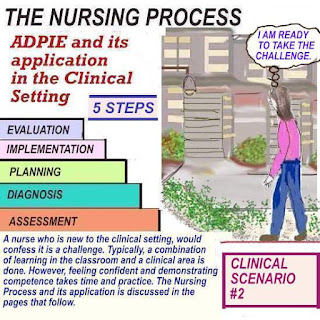UNDERSTANDING STROKE / ICP MONITORING
What is a stroke?
A stroke is also known as a brain attack.
Identifying strokes
A stroke may be hemorrhagic (caused by bleeding) or
ischemic (embolic) caused by a clot or plaque in a blood
vessel. Bleeding into the brain may be caused by trauma
or rupture of a blood vessel due to high blood pressure.
ischemic (embolic) caused by a clot or plaque in a blood
vessel. Bleeding into the brain may be caused by trauma
or rupture of a blood vessel due to high blood pressure.
In the case of an embolic stroke, a blood clot may obstruct
the flow of blood in the brain. This will also affect oxygen
to the brain. Embolic strokes are usually treated with drugs
such as TPA ( Tissue Plasminogenic Activator).
Antihypertensive drugs and anti seizure medications may
also be ordered.
the flow of blood in the brain. This will also affect oxygen
to the brain. Embolic strokes are usually treated with drugs
such as TPA ( Tissue Plasminogenic Activator).
Antihypertensive drugs and anti seizure medications may
also be ordered.
How is a stroke diagnosed?
Signs and symptoms such as weakness on one side, speech
difficulty, visual disturbances or aphasia help in making a
diagnosis. A CAT scan or MRI are diagnostics tests done
to confirm the diagnosis.
difficulty, visual disturbances or aphasia help in making a
diagnosis. A CAT scan or MRI are diagnostics tests done
to confirm the diagnosis.
Learn more :After a stroke
Why is ICP Monitoring done?
ICP ( Intracranial Pressure Monitoring) may be done
for a number of reasons.These include: hydrocephalus,
Subarachnoid hemorrhage, severe head injury,
hepatic encephalopathy.
for a number of reasons.These include: hydrocephalus,
Subarachnoid hemorrhage, severe head injury,
hepatic encephalopathy.
Intracranial Pressure (ICP) Monitoring is done to monitor
and treat increased brain pressure. If the brain pressure is
high, the doctor will order treatment to decrease brain swelling.
Depending on the degree of swelling in the brain, surgical
intervention, or an EVD may be placed.
and treat increased brain pressure. If the brain pressure is
high, the doctor will order treatment to decrease brain swelling.
Depending on the degree of swelling in the brain, surgical
intervention, or an EVD may be placed.
An EVD ( external ventricular device ) is placed in the
ventricle inside the brain.This is done by the doctor, under
sterile conditions. This will allow drainage of cerebrospinal
fluid ( CSF) or blood to be drained and decrease brain swelling.
Medications such as Mannitol is also used.
Pain medication and sedation is also ordered.
ventricle inside the brain.This is done by the doctor, under
sterile conditions. This will allow drainage of cerebrospinal
fluid ( CSF) or blood to be drained and decrease brain swelling.
Medications such as Mannitol is also used.
Pain medication and sedation is also ordered.
Brain herniation
Herniation may very readily occur if brain swelling
is left untreated. Swelling in the brain may cause brain
tissue to exit through the Foramen Magnum at the base
of the skull.
is left untreated. Swelling in the brain may cause brain
tissue to exit through the Foramen Magnum at the base
of the skull.
Medical or surgical intervention is usually done, to
maintain normal ICP and prevent herniation.
How is ICP managed?
maintain normal ICP and prevent herniation.
How is ICP managed?
Typically, ICP monitoring is done in an ICU setting.
The doctor orders vital signs, frequency of ICP recordings,
pain, and other medications. The nurse has an important
role in assessing and documenting the patient's neurological
status, vital signs, oxygen saturation, intake, and output.
The doctor orders vital signs, frequency of ICP recordings,
pain, and other medications. The nurse has an important
role in assessing and documenting the patient's neurological
status, vital signs, oxygen saturation, intake, and output.
Significant changes of any kind should be reported to the
doctor. The brain injured patient, benefits from adequate
rest, as this helps to prevent secondary injury to the brain.
doctor. The brain injured patient, benefits from adequate
rest, as this helps to prevent secondary injury to the brain.
Cranial nerves
In the image below, an EVD ( External Ventricular Device)
is being inserted.
How is insertion of an EVD done?
Under sterile conditions, the neurosurgeon shaves an area
of the head and cleanses the skin. A device similar to a wall
drill is used to penetrate the skull and access the ventricle.
In the image below, an EVD ( External Ventricular Device)
is being inserted.
How is insertion of an EVD done?
Under sterile conditions, the neurosurgeon shaves an area
of the head and cleanses the skin. A device similar to a wall
drill is used to penetrate the skull and access the ventricle.
A sterile catheter is placed in the ventricle and a drainage
system is attached.
Enjoy watching the video for more information
The New Nurse- ICP Monitoring
system is attached.
Enjoy watching the video for more information
The New Nurse- ICP Monitoring
Meningeal coverings and ventricles of the brain







Comments
Post a Comment